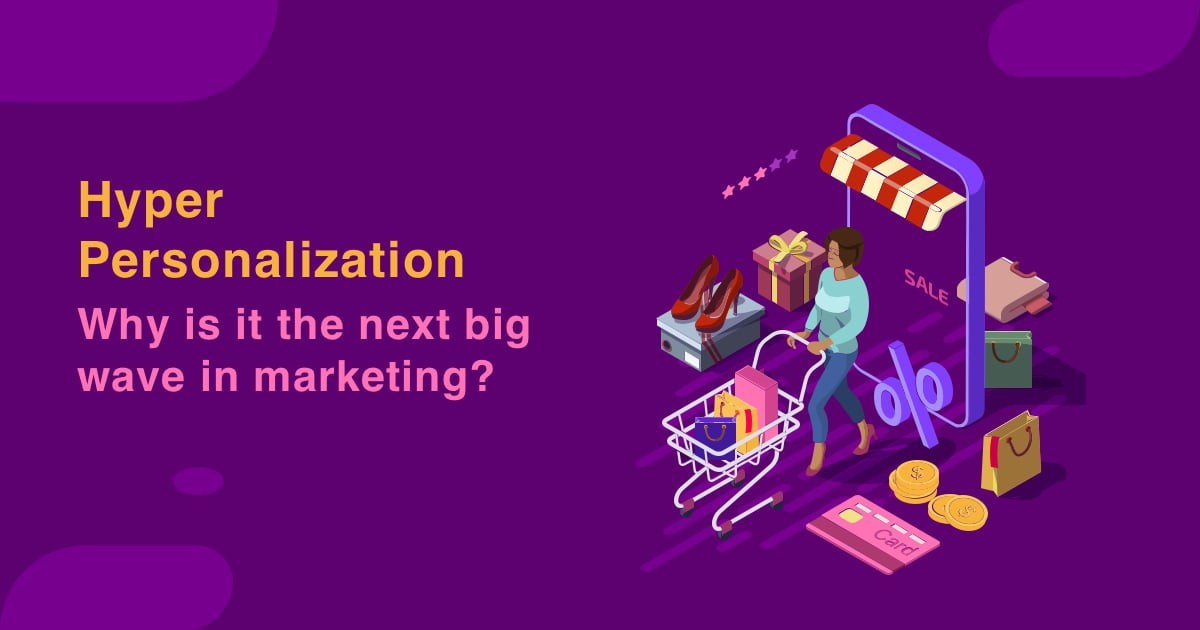
Hyper-personalization is the new buzzword amongst businesses but what is it?
Let us assume two cases:
- You are entering your favorite coffee place and you don’t have to tell your name and the drink you are probably going to order at the billing counter as the person already knows you, maybe you have visited the place earlier as well and the person recognizes you.
- Now, imagine that you visit the same coffee place for the 100th time and still the person at the billing counter asks for your name and your order even though you end up ordering the same item every time.
Now, compare the two scenarios - in the first scenario you will feel gratitude, and in the second scenario you will feel clinched.
The same concept is the underlying principle of hyper-personalization.
Today’s customer wants to engage with the business that can:
- Identify them
- Understands their issues
- Knows how to solve their issues based on the real-time captured data.
You will be at a loss if you are not able to answer the concerns of your customers. And the only thing that can help you out is the introduction of Hyper-personalization.
Now, what exactly is hyper-personalization, and how it can help you win your customers over.
What is Hyper-Personalization?
“We see our customers as invited guests to a party, and we are the hosts. It’s our job every day to make every important aspect of the customer experience a little bit better”
- Jeff Bezos, CEO, Amazon
This is a perfect mindset for Hyper-Personalization. It is the concept of gathering behavioral data of customers to customize products and services according to the needs of the customer. Hyper-personalization is an advanced step of personalized marketing where it leverages AI and Big-Data to cater to the needs of the customer by providing more relevant and focused experience, products, and content.

Main Components of Hyper-Personalization
For the implementation of Hyper-Personalization, we have three main components that can help businesses.
Engrossing
Customers expect some level of personalized experience. But the place where you can make a difference is the strategy, how are you engaging your customer.
Like Netflix and Spotify use your browsing data to create personalized “For You” content and it is not a stretch, other brands can also do the same rather I should say other brands are also adopting the same.
You can go beyond digital personalization through content and leverage browsing history or purchase history and create a hyper-personalized experience.
Aptness
Now, you have crossed the first hurdle. Now the next step is to create a hyper-personalized experience for the individual which is extremely relevant to them.
For this, you need exact real-time data. You can’t just rely on the purchase history alone; you should know how the customer is interacting with the brand digitally and identify their goals.
Certitude
Your customer should not feel clenched while giving their data to your brand. For this, you can build trust by showing empathy. Giving the option to the customer to engage with an agent can work wonders for you.
How Can Hyper-Personalization Help Your Business?
A. Reduced obstacles
You get only a few seconds to catch your customers' attention. Your communication should be able to make you cut the clutter and stand out from the crowd.
Hyper-personalization rules out the possibility of obstacles in the business that can cause complications in the shopping experiences of the customers.
B. Revenue augmentation
Revenue is directly proportional to personalization customers prefer to go to brands that provide a more personalized experience.
Hyper-personalization saves customers from being distressed with the large collection by representing items that are most relevant and are applicable for the customers.
C. Dynamic not static focus
People frequently change their preferences, but a hyper-personalized brand will always remain updated with the change in the taste of the customer and hence will adjust quickly providing the customer with the right product, always!
It is the ultimate path for any brand to promptly get and sustain the attention of the customers.
D. Meaningful conversation
Hyper-personalization helps your executives communicate with your customers. The executives know the history of purchases made by the customer all thanks to Hyper-Personalization, they can tailor their solutions according to the customers’ needs and tastes.
Your brand will be able to match the true needs of the customer and offer a completely personalized experience.
Final thought
Hyper-personalization has taken the conventional ways many steps ahead. Because of digital competence hyper-personalization is expanding more to create the correct experience for each customer.
In the coming years, more brands and businesses will adopt this technology into their marketing plans to make their place in the cutthroat competition in the market.









